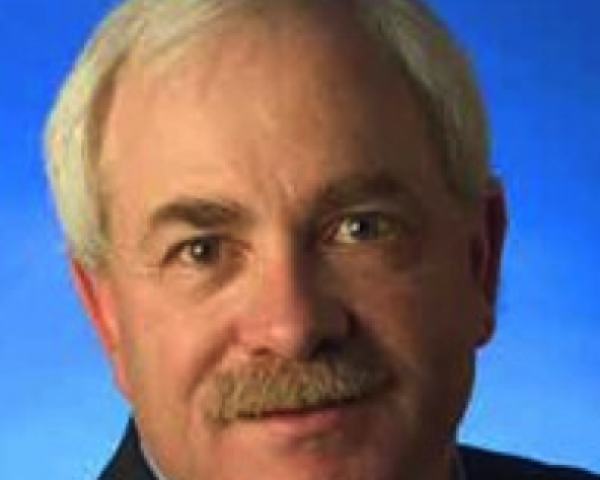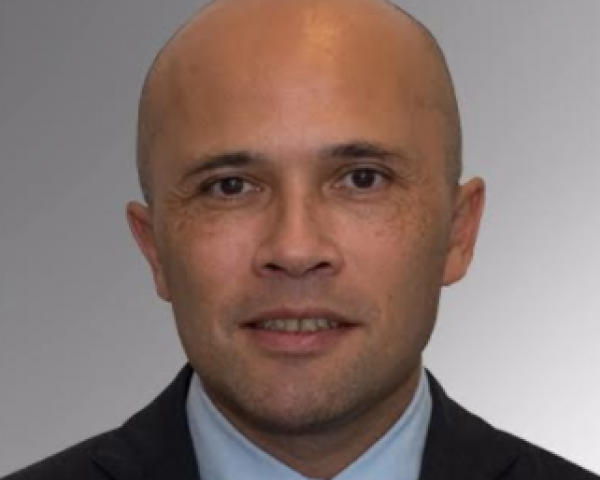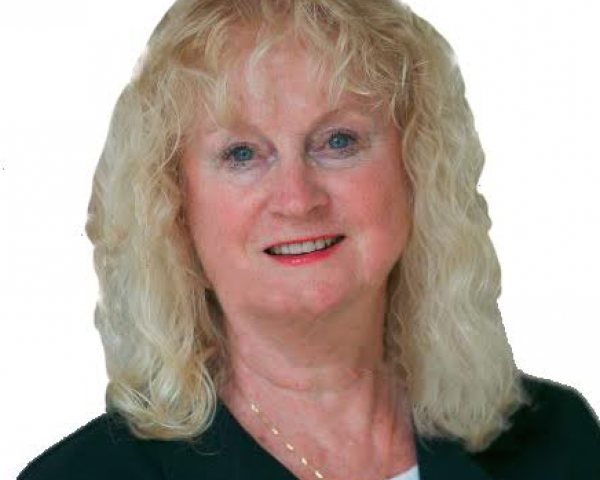Since its passage, the Affordable Care Act (i.e., ACA) has been a controversial law. From the time of its passage in March 2010 until U.S. House and Senate Republicans began their efforts to repeal and replace the ACA in the spring of 2017,
support for the law has never exceeded 50%. The ACA’s lack of popularity is a function of the disruption it has caused in the Individual insurance markets and the premium increases passed on to policyholders. However, some provisions of the ACA are very popular. One aspect of the law that has significant public support is the protections it provides for persons with pre-existing conditions (i.e., guaranteed issue and modified community rating), with polls showing public support for these
provisions at 78% or
greater.
Protections for persons with pre-existing conditions and the lack of a strong Individual mandate are the main reasons for the high premium increases observed to date in the Individual ACA market. Simply put, high premium rates have caused younger and healthier consumers to forgo ACA coverage. This problem is exacerbated by the current 3:1 age rating restrictions, which result in younger consumers paying higher premiums compared with their relative risk. As premium rates continue to rise, this trend will escalate, which could lead to one or more the states finding their Individual ACA markets in an adverse selection spiral.
It is the opinion of the authors that persons with pre-existing conditions are not insurable risks, and that attempts to accommodate them in insurance market risk pools are bound to fail. Furthermore, we think that providing healthcare insurance coverage to persons with pre-existing conditions amounts to a necessary form of charity, and is therefore a public good. We believe that forcing responsibility for the funding and management of public services onto participants in private markets is neither fair nor prudent. Instead, we believe the cost of such mandates should be the responsibility of those who enact them, i.e., the general public through its elected officials and government agencies.
The authors agree that persons with pre-existing conditions should not be denied affordable health insurance coverage. However, we think the appropriate vehicle for covering these people is a high-risk pool attached to the Individual ACA market and funded by general tax revenues. We believe that a properly structured high-risk pool would greatly lower premiums in the Individual ACA markets, significantly reduce the number of uninsured, provide for better returns on investment for care management programs, would be relatively inexpensive to operate, and would provide for a strong and sustainable lasting Individual health insurance market in the U.S.
Policy Proposal
This section provides the details for our proposal for the establishment of a permanent high-risk pool to pay for the cost of members with pre-existing conditions in the Individual ACA market. To make our proposal as easily understandable as possible, please note that all rules, subsidies, and structures that currently apply to the Individual ACA markets would continue to do so unless stated otherwise. Here is our proposal:
- The federal government, through the Centers for Medicare & Medicaid, would administer a high-risk pool to cover people with pre-existing conditions who are seeking health insurance coverage in the Individual ACA market.
- The cost of the program would be funded by a combination of the insurance premiums paid by the members identified with pre-existing conditions and general tax revenue generated through an additional payroll tax.
- All member premiums in the Individual ACA marketplace would be priced assuming that no one in the risk pool has a pre-existing condition.
- The allowable age rates for adults would increase from the current ratio of 3:1 to 5:1.
- Members identified as having one or more pre-existing conditions would have their premiums and claim costs ceded to CMS. Members would continue to use their “insurer’s” networks and benefit plans as long as those members continued to pay their premiums to the insurance company. Insurers would forward providers’ bills for members with pre-existing conditions to CMS as they are received, and CMS would directly pay the providers within a set period of time (e.g., three to six months).
- To be defined as having a pre-existing condition, an applicant would be required to have a current diagnosis at the time of enrollment for one or more conditions from a pre-defined list of conditions. This means that a member who develops a condition that is on the pre-existing conditions list during a coverage period would be the financial responsibility of his insurance company not CMS until the beginning the of the next coverage period. Please note that the policy would allow insurers to underwrite new members entering the Individual ACA for the purpose of determining whether or not they have a pre-existing condition at the time of enrollment.
- CMS would establish care management programs (administered internally or externally through vendors) for members identified as having pre-existing conditions, and would work directly with providers to efficiently and successfully manage the care of those members.
Please note that the above list is a general policy outline. We imagine that there could be ways to “game” this, and we reasonably expect that legislators and regulators will anticipate and react to attempts to circumvent the purpose and goals of the policy.
See also: What Trump Wants to Do on ACA
Modeling Methodology for Claims Projections
The relative costs of Individual ACA members in 2015, with and without pre-existing conditions, were modeled using the 2014 and 2015 Individual ACA membership and claims experience Axene Health Partner’s proprietary experience database. The 2015 Individual ACA experience in AHP’s experience database included more than 2.5 million member months. Chronic conditions for these members were assigned using the University of California, San Diego’s Chronic Illness and Disability Payment System (CDPS) risk adjustment model. The CDPS model assigns one or more of 58 possible conditions based on
ICD9 and ICD10 diagnosis codes.
To simulate the underwriting of pre-existing conditions, we defined two classes of members with pre-existing conditions: members with known conditions, and members with undisclosed conditions. Members with known conditions were identified by comparing the CDPS results for Individual ACA members in 2015 with the CDPS results for members with any eligibility in 2014 with this health insurer. Conditions for these members that existed in both 2014 and 2015 were considered to be pre-existing in 2015. Members with undisclosed conditions were, by definition, more difficult to identify. For members that had Individual ACA eligibility in 2015, but no prior eligibility with a health insurer in AHP’s experience data, we assumed that the member had an undisclosed pre-existing condition if claims incurred within the first month of a member’s eligibility, as well as the claims over the remainder of 2015, were for one or more of the listed CDPS conditions.
Because the CDPS model is intended to calculate the total relative risk of a given member based on all of a member’s conditions, the model can flag a member for multiple conditions. For our modeling purposes, we wanted to assign at most one pre-existing condition per member, because it was not necessary for us to split a member’s total claims cost across multiple conditions. In cases where the CDPS model assigned more than one pre-existing condition to a given member, only the most severe condition was recorded. Condition severity was based on the CDPS model’s risk weights, and all costs were assigned to the condition with the
highest risk weight.
We did not consider all of the 58 conditions used in the CDPS risk adjustment model to be appropriate for the pre-existing conditions high risk pool. Approximately two-thirds of the CDPS condition categories were excluded due to their relatively low CDPS model risk weights. We tended to keep conditions with qualifiers of “High” or “Very High”, more often than qualifiers of “Medium” or “Low”. We also used some judgement to include certain conditions when other categories within a certain condition class were already included. In the end, 21 conditions for adults and 19 conditions for children were chosen as appropriate for the pre-existing conditions high risk pool. Members who did not have a pre-existing condition on the list of chosen conditions, or members with no conditions at all, were assigned a condition of “none” for our modeling purposes. Table 1 below provides a summary of the pre-existing condition categories chosen.

Member months, member counts, allowed claims, and paid claims from AHP’s experience database for 2015 were aggregated for each condition into seven age bands. From these summary statistics, the probability of a member having a given condition by age band was calculated. Average allowed and paid claims PMPMs were also calculated for each condition and age band.
Using the summary statistics developed from AHP’s experience database for 2015 Individual ACA experience data, we modeled the expected cost of each state’s 2015 Individual ACA market. The total Individual ACA population that would be simulated for each state, as well as the distribution of ages within a given state, were collected from CMS public use data. The total Individual ACA population of each state was modeled based on the total State Billable Members Months listed in Appendix A to the Summary Report on Transitional Reinsurance Payments and Permanent Risk Adjustment Transfers for the
2015 Benefit Year. Billable member months were grossed up by approximately 0.40% to calculate total member months. This gross-up factor is based on the ratio of total member months to billable member months that we have seen in our clients’ recent data. Where possible, the distribution of ages within a state were based on the
2015 Marketplace Open Enrollment Public Use File. This report only contains information for the 37 states that used a federally facilitated exchange in 2015. For the states not captured in that report, the distribution of ages in the
2017 Marketplace Open Enrollment Public Use File were used instead.
A Monte Carlo simulation was performed in order to create a simulated Individual ACA market for each state. A set of random numbers was generated for each member in each state. These random numbers were used to assign the member’s age band by comparing the random number to the age distribution of members for a given state. A second set of random numbers was generated for each member and used to assign a condition by comparing the random number to the distribution of conditions for each age band. PMPM costs for each condition within each age band were scaled so that the expected total paid PMPM for each state tied to the state’s Average PMPM Claims reported in the
2015 Paid Claims Cost by State Report, produced based on data submitted to the EDGE server for purposes of the reinsurance program.
Please note, we believe the actual population of people with pre-existing conditions that would obtain coverage through the above defined high-risk pool would be essentially unchanged from the 2015 Individual ACA members who we have identified as having a pre-existing condition from our list. This is because the ACA premiums and subsidies are very attractive to those with pre-existing conditions, and we do not expect that our proposal would make the Individual ACA market more attractive to people with pre-existing conditions in any meaningful way.
Using the above methodology and data sources, we were only able to model the costs of the Individual ACA markets in 48 states. Excluded from our analysis were Massachusetts, Vermont, Washington D.C., and other U.S. territories such as Puerto Rico and Guam, due to a lack of publicly-available information necessary to model the costs of their Individual ACA market participants in 2015.
The results of our modeling provided us with average paid claims and “sustainable market premium” PMPMs for each of the 48 states. These metrics were calculated both including and excluding members with pre-existing conditions. We defined the average sustainable market premium as the premium that would result in an average loss ratio of 82% in each state’s Individual ACA market. Our last step was to develop aggregate results for each of the four metrics across all 48 states.
Modeling Results
Table 2 below provides a summary of the results of the 2015 Individual ACA markets in the 48 states we modeled.

Ceding members with pre-existing condition to CMS would have decreased the size of the 2015 Individual ACA markets in the 48 states in our analysis by approximately 3.1%, lowered total paid claims by approximately 23%, and decreased sustainable market premiums by almost 21%.
In total, health insurers in the 48 states in 2015 would have ceded $14.3 billion in claims and $1.84 billion in premium to CMS (leaving a net unfunded program cost of $12.5 billion) under our proposed high-risk pool program. Assuming that program expenses are 5% of total costs results in net program costs of $13.1 billion a year in 2015 dollars for the 48 states. Scaling this result to account for all 50 states, Washington D.C., and U.S. Territories would increase net program costs to $13.6 billion a year in 2015 dollars, which we rounded to $14 billion to provide some conservatism in our estimate.
By ceding members with pre-existing conditions to CMS’ Individual ACA high-risk pool, we have shown that insurers could lower sustainable market premium rates by more than 20%. A reduction in Individual ACA sustainable market premiums of 20% would make future premiums rates much more attractive to younger and healthier people who would otherwise forgo health insurance coverage.
Similar to the manner in which members with pre-existing conditions can cause premiums rate increases to compound due to adverse selection, removing those members from the Individual ACA pool could have a favorable compounding effect on rates as a healthier average risk pool causes premiums to drop, thereby attracting additional healthy members who have an additional favorable impact on premiums.
See also: 10 Ideas That Could Fix Healthcare
Additionally, by resetting the age curve from 3:1 to 5:1 (i.e., the maximum ratio of premiums paid by members age 65 to premiums paid by members age 21), allows for a further decrease in required premiums for younger and healthier members.

Table 3 shows that removing members with pre-existing conditions from Individual ACA risk pool and resetting the premium age curve from 3:1 to 5:1 allows for decreases in required premium rates for all ages of at least 5%, while decreasing rates for the youngest members over 40%. These premium decreases are before the impact of the positive selection spiral. With the lower rates attracting more younger individuals into the risk pool, the premiums for older individuals will decrease accordingly.
Additional Considerations
Done correctly, we believe the creation of a high-risk pool of Individual ACA members with pre-existing conditions would result in a better return of investment for care management programs for these members. Given that members are allowed to change insurance carriers, persons with pre-existing conditions are as likely as any other market participants to shop for better plans and rates for the coverage they require. Care and disease management programs often require long time horizons to bear results. This means that insurers are less likely to implement cost-saving programs when members who benefited from the programs could change insurers before the full impact of the members’ claims cost savings are realized. By moving a large percentage of those with high-cost conditions to care management programs administered by a single entity (i.e., CMS), the return on investment of these programs is likely to be higher and results of the programs are likely to be more impactful for all insurers participating in the market.
Due to the large volume of claims for members with pre-existing conditions, CMS would have the ability to review clinical practices, related costs, and outcomes for the services provided to these members. This information could be used to develop approaches to improve the effectiveness and efficiency, while lowering the cost of the care provided to these high cost claimants. Using evidence-based targets, CMS could then enter into gain and/or risk-sharing arrangements to help improve the quality and lower the cost of care provided.
Conclusion
In this paper, we have introduced a straight-forward and workable policy proposal that would continue to provide health insurance coverage to people with pre-existing conditions, significantly lower premiums in the Individual ACA insurance markets, reduce the number of uninsured, and allow for the creation of care management and risk-sharing arrangements with providers that would could greatly improve the quality and lower the cost of care. The annual price of this proposal would be approximately $14 billion in 2015 dollars, and represent an approximately
0.38% increase in the federal budget. Considering the importance that voters place of health care cost, quality, and access, we believe that our policy proposal would provide a popular and effective change to this critical component of the U.S. health care system at
relatively small price.
 Member months, member counts, allowed claims, and paid claims from AHP’s experience database for 2015 were aggregated for each condition into seven age bands. From these summary statistics, the probability of a member having a given condition by age band was calculated. Average allowed and paid claims PMPMs were also calculated for each condition and age band.
Using the summary statistics developed from AHP’s experience database for 2015 Individual ACA experience data, we modeled the expected cost of each state’s 2015 Individual ACA market. The total Individual ACA population that would be simulated for each state, as well as the distribution of ages within a given state, were collected from CMS public use data. The total Individual ACA population of each state was modeled based on the total State Billable Members Months listed in Appendix A to the Summary Report on Transitional Reinsurance Payments and Permanent Risk Adjustment Transfers for the 2015 Benefit Year. Billable member months were grossed up by approximately 0.40% to calculate total member months. This gross-up factor is based on the ratio of total member months to billable member months that we have seen in our clients’ recent data. Where possible, the distribution of ages within a state were based on the 2015 Marketplace Open Enrollment Public Use File. This report only contains information for the 37 states that used a federally facilitated exchange in 2015. For the states not captured in that report, the distribution of ages in the 2017 Marketplace Open Enrollment Public Use File were used instead.
A Monte Carlo simulation was performed in order to create a simulated Individual ACA market for each state. A set of random numbers was generated for each member in each state. These random numbers were used to assign the member’s age band by comparing the random number to the age distribution of members for a given state. A second set of random numbers was generated for each member and used to assign a condition by comparing the random number to the distribution of conditions for each age band. PMPM costs for each condition within each age band were scaled so that the expected total paid PMPM for each state tied to the state’s Average PMPM Claims reported in the 2015 Paid Claims Cost by State Report, produced based on data submitted to the EDGE server for purposes of the reinsurance program.
Please note, we believe the actual population of people with pre-existing conditions that would obtain coverage through the above defined high-risk pool would be essentially unchanged from the 2015 Individual ACA members who we have identified as having a pre-existing condition from our list. This is because the ACA premiums and subsidies are very attractive to those with pre-existing conditions, and we do not expect that our proposal would make the Individual ACA market more attractive to people with pre-existing conditions in any meaningful way.
Using the above methodology and data sources, we were only able to model the costs of the Individual ACA markets in 48 states. Excluded from our analysis were Massachusetts, Vermont, Washington D.C., and other U.S. territories such as Puerto Rico and Guam, due to a lack of publicly-available information necessary to model the costs of their Individual ACA market participants in 2015.
The results of our modeling provided us with average paid claims and “sustainable market premium” PMPMs for each of the 48 states. These metrics were calculated both including and excluding members with pre-existing conditions. We defined the average sustainable market premium as the premium that would result in an average loss ratio of 82% in each state’s Individual ACA market. Our last step was to develop aggregate results for each of the four metrics across all 48 states.
Modeling Results
Table 2 below provides a summary of the results of the 2015 Individual ACA markets in the 48 states we modeled.
Member months, member counts, allowed claims, and paid claims from AHP’s experience database for 2015 were aggregated for each condition into seven age bands. From these summary statistics, the probability of a member having a given condition by age band was calculated. Average allowed and paid claims PMPMs were also calculated for each condition and age band.
Using the summary statistics developed from AHP’s experience database for 2015 Individual ACA experience data, we modeled the expected cost of each state’s 2015 Individual ACA market. The total Individual ACA population that would be simulated for each state, as well as the distribution of ages within a given state, were collected from CMS public use data. The total Individual ACA population of each state was modeled based on the total State Billable Members Months listed in Appendix A to the Summary Report on Transitional Reinsurance Payments and Permanent Risk Adjustment Transfers for the 2015 Benefit Year. Billable member months were grossed up by approximately 0.40% to calculate total member months. This gross-up factor is based on the ratio of total member months to billable member months that we have seen in our clients’ recent data. Where possible, the distribution of ages within a state were based on the 2015 Marketplace Open Enrollment Public Use File. This report only contains information for the 37 states that used a federally facilitated exchange in 2015. For the states not captured in that report, the distribution of ages in the 2017 Marketplace Open Enrollment Public Use File were used instead.
A Monte Carlo simulation was performed in order to create a simulated Individual ACA market for each state. A set of random numbers was generated for each member in each state. These random numbers were used to assign the member’s age band by comparing the random number to the age distribution of members for a given state. A second set of random numbers was generated for each member and used to assign a condition by comparing the random number to the distribution of conditions for each age band. PMPM costs for each condition within each age band were scaled so that the expected total paid PMPM for each state tied to the state’s Average PMPM Claims reported in the 2015 Paid Claims Cost by State Report, produced based on data submitted to the EDGE server for purposes of the reinsurance program.
Please note, we believe the actual population of people with pre-existing conditions that would obtain coverage through the above defined high-risk pool would be essentially unchanged from the 2015 Individual ACA members who we have identified as having a pre-existing condition from our list. This is because the ACA premiums and subsidies are very attractive to those with pre-existing conditions, and we do not expect that our proposal would make the Individual ACA market more attractive to people with pre-existing conditions in any meaningful way.
Using the above methodology and data sources, we were only able to model the costs of the Individual ACA markets in 48 states. Excluded from our analysis were Massachusetts, Vermont, Washington D.C., and other U.S. territories such as Puerto Rico and Guam, due to a lack of publicly-available information necessary to model the costs of their Individual ACA market participants in 2015.
The results of our modeling provided us with average paid claims and “sustainable market premium” PMPMs for each of the 48 states. These metrics were calculated both including and excluding members with pre-existing conditions. We defined the average sustainable market premium as the premium that would result in an average loss ratio of 82% in each state’s Individual ACA market. Our last step was to develop aggregate results for each of the four metrics across all 48 states.
Modeling Results
Table 2 below provides a summary of the results of the 2015 Individual ACA markets in the 48 states we modeled.
 Ceding members with pre-existing condition to CMS would have decreased the size of the 2015 Individual ACA markets in the 48 states in our analysis by approximately 3.1%, lowered total paid claims by approximately 23%, and decreased sustainable market premiums by almost 21%.
In total, health insurers in the 48 states in 2015 would have ceded $14.3 billion in claims and $1.84 billion in premium to CMS (leaving a net unfunded program cost of $12.5 billion) under our proposed high-risk pool program. Assuming that program expenses are 5% of total costs results in net program costs of $13.1 billion a year in 2015 dollars for the 48 states. Scaling this result to account for all 50 states, Washington D.C., and U.S. Territories would increase net program costs to $13.6 billion a year in 2015 dollars, which we rounded to $14 billion to provide some conservatism in our estimate.
By ceding members with pre-existing conditions to CMS’ Individual ACA high-risk pool, we have shown that insurers could lower sustainable market premium rates by more than 20%. A reduction in Individual ACA sustainable market premiums of 20% would make future premiums rates much more attractive to younger and healthier people who would otherwise forgo health insurance coverage.
Similar to the manner in which members with pre-existing conditions can cause premiums rate increases to compound due to adverse selection, removing those members from the Individual ACA pool could have a favorable compounding effect on rates as a healthier average risk pool causes premiums to drop, thereby attracting additional healthy members who have an additional favorable impact on premiums.
See also: 10 Ideas That Could Fix Healthcare
Additionally, by resetting the age curve from 3:1 to 5:1 (i.e., the maximum ratio of premiums paid by members age 65 to premiums paid by members age 21), allows for a further decrease in required premiums for younger and healthier members.
Ceding members with pre-existing condition to CMS would have decreased the size of the 2015 Individual ACA markets in the 48 states in our analysis by approximately 3.1%, lowered total paid claims by approximately 23%, and decreased sustainable market premiums by almost 21%.
In total, health insurers in the 48 states in 2015 would have ceded $14.3 billion in claims and $1.84 billion in premium to CMS (leaving a net unfunded program cost of $12.5 billion) under our proposed high-risk pool program. Assuming that program expenses are 5% of total costs results in net program costs of $13.1 billion a year in 2015 dollars for the 48 states. Scaling this result to account for all 50 states, Washington D.C., and U.S. Territories would increase net program costs to $13.6 billion a year in 2015 dollars, which we rounded to $14 billion to provide some conservatism in our estimate.
By ceding members with pre-existing conditions to CMS’ Individual ACA high-risk pool, we have shown that insurers could lower sustainable market premium rates by more than 20%. A reduction in Individual ACA sustainable market premiums of 20% would make future premiums rates much more attractive to younger and healthier people who would otherwise forgo health insurance coverage.
Similar to the manner in which members with pre-existing conditions can cause premiums rate increases to compound due to adverse selection, removing those members from the Individual ACA pool could have a favorable compounding effect on rates as a healthier average risk pool causes premiums to drop, thereby attracting additional healthy members who have an additional favorable impact on premiums.
See also: 10 Ideas That Could Fix Healthcare
Additionally, by resetting the age curve from 3:1 to 5:1 (i.e., the maximum ratio of premiums paid by members age 65 to premiums paid by members age 21), allows for a further decrease in required premiums for younger and healthier members.
 Table 3 shows that removing members with pre-existing conditions from Individual ACA risk pool and resetting the premium age curve from 3:1 to 5:1 allows for decreases in required premium rates for all ages of at least 5%, while decreasing rates for the youngest members over 40%. These premium decreases are before the impact of the positive selection spiral. With the lower rates attracting more younger individuals into the risk pool, the premiums for older individuals will decrease accordingly.
Additional Considerations
Done correctly, we believe the creation of a high-risk pool of Individual ACA members with pre-existing conditions would result in a better return of investment for care management programs for these members. Given that members are allowed to change insurance carriers, persons with pre-existing conditions are as likely as any other market participants to shop for better plans and rates for the coverage they require. Care and disease management programs often require long time horizons to bear results. This means that insurers are less likely to implement cost-saving programs when members who benefited from the programs could change insurers before the full impact of the members’ claims cost savings are realized. By moving a large percentage of those with high-cost conditions to care management programs administered by a single entity (i.e., CMS), the return on investment of these programs is likely to be higher and results of the programs are likely to be more impactful for all insurers participating in the market.
Due to the large volume of claims for members with pre-existing conditions, CMS would have the ability to review clinical practices, related costs, and outcomes for the services provided to these members. This information could be used to develop approaches to improve the effectiveness and efficiency, while lowering the cost of the care provided to these high cost claimants. Using evidence-based targets, CMS could then enter into gain and/or risk-sharing arrangements to help improve the quality and lower the cost of care provided.
Conclusion
In this paper, we have introduced a straight-forward and workable policy proposal that would continue to provide health insurance coverage to people with pre-existing conditions, significantly lower premiums in the Individual ACA insurance markets, reduce the number of uninsured, and allow for the creation of care management and risk-sharing arrangements with providers that would could greatly improve the quality and lower the cost of care. The annual price of this proposal would be approximately $14 billion in 2015 dollars, and represent an approximately 0.38% increase in the federal budget. Considering the importance that voters place of health care cost, quality, and access, we believe that our policy proposal would provide a popular and effective change to this critical component of the U.S. health care system at relatively small price.
Table 3 shows that removing members with pre-existing conditions from Individual ACA risk pool and resetting the premium age curve from 3:1 to 5:1 allows for decreases in required premium rates for all ages of at least 5%, while decreasing rates for the youngest members over 40%. These premium decreases are before the impact of the positive selection spiral. With the lower rates attracting more younger individuals into the risk pool, the premiums for older individuals will decrease accordingly.
Additional Considerations
Done correctly, we believe the creation of a high-risk pool of Individual ACA members with pre-existing conditions would result in a better return of investment for care management programs for these members. Given that members are allowed to change insurance carriers, persons with pre-existing conditions are as likely as any other market participants to shop for better plans and rates for the coverage they require. Care and disease management programs often require long time horizons to bear results. This means that insurers are less likely to implement cost-saving programs when members who benefited from the programs could change insurers before the full impact of the members’ claims cost savings are realized. By moving a large percentage of those with high-cost conditions to care management programs administered by a single entity (i.e., CMS), the return on investment of these programs is likely to be higher and results of the programs are likely to be more impactful for all insurers participating in the market.
Due to the large volume of claims for members with pre-existing conditions, CMS would have the ability to review clinical practices, related costs, and outcomes for the services provided to these members. This information could be used to develop approaches to improve the effectiveness and efficiency, while lowering the cost of the care provided to these high cost claimants. Using evidence-based targets, CMS could then enter into gain and/or risk-sharing arrangements to help improve the quality and lower the cost of care provided.
Conclusion
In this paper, we have introduced a straight-forward and workable policy proposal that would continue to provide health insurance coverage to people with pre-existing conditions, significantly lower premiums in the Individual ACA insurance markets, reduce the number of uninsured, and allow for the creation of care management and risk-sharing arrangements with providers that would could greatly improve the quality and lower the cost of care. The annual price of this proposal would be approximately $14 billion in 2015 dollars, and represent an approximately 0.38% increase in the federal budget. Considering the importance that voters place of health care cost, quality, and access, we believe that our policy proposal would provide a popular and effective change to this critical component of the U.S. health care system at relatively small price.















